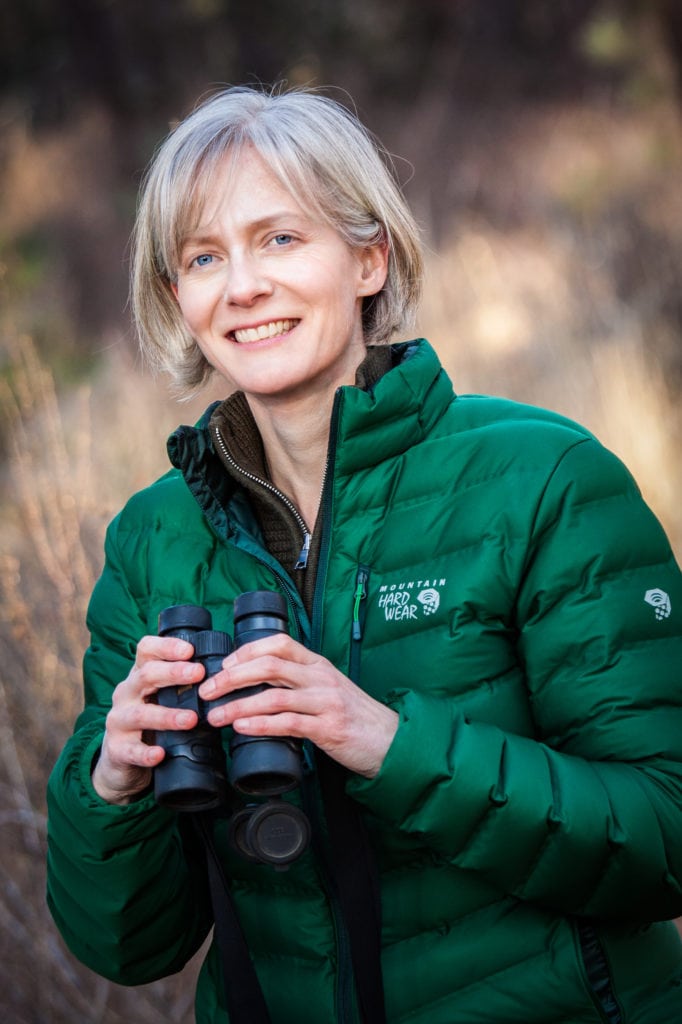Author: LeeAnn Kriegh | Published: September 15, 2020 | Category: Species Spotlight
Why Aspen Quake
The day I fell in love with Central Oregon, I woke to the sound of a quaking aspen’s leaves rustling outside my bedroom window. A breeze was stirring, and I looked out to see the leaves flashing green-silver against the white of the trunk and the blue of a cloudless sky. That afternoon, my friend and I sat under the tree in Adirondack chairs, trying to read but listening instead to the soft applause of those heart-shaped leaves. I was hooked.
Quaking aspen (Populus tremuloides) is especially beloved this time of year, in September and October, when the leaves turn a brilliant yellow-gold or red-orange. The East Coast is spoiled with such autumnal richness from the many maples, oaks, sycamores, hickories, and other deciduous treasures. Out West, we’re blessed with a bounty of evergreens but only the occasional splash of fall color, the brightest of which comes from quaking aspen.
Part of the appeal of these trees in Oregon is that they’re a little hard to find, especially in western parts of the state. They grow in far more profusion east of the Cascades, where you can have a picnic under the groves in remote places like Steens and Hart mountains, or seek out small patches along waterways, including many where ONDA and its hardy volunteers have planted them as part of stream restoration efforts.
Aspens grow where there’s moisture and not much shade: along streams, in wetlands, on slopes, in forest openings. More poetically, Donald Peattie writes in his classic book A Natural History of Western Trees, “Where the deer bound, where the trout rise, where your horse stops to slather a drink from icy water while the sun is warm on the back of your neck, where every breath you draw is exhilaration — that is where the Aspens grow.”
Aspen trees, or ramets, sprout in groves because they’re part of a colony that shares a common root system. Pity those who plant aspens in small neighborhood lots, not realizing that the parent root system will branch out east, west, north, and south, sending up suckers that bust through cracks in driveways and patios. Aspens are meant to live wild, where their clonal system can spread far and wide, creating rich habitat for hundreds of species.
Sit for a spell in an aspen grove to experience that lively habitat for yourself, listening to the buzz and chirp and flutter of insects and birds all around. Woodpeckers drill into the soft bark—you can see their marks. Elk drop their calves in aspen stands, beavers worship the tree above all others, a diverse array of shrubs and grasses and other plants grow in the speckled understory, and all of the above entices predators from hawks to coyotes.
When people ask why quaking aspen leaves flutter and chatter in their particular way — the novelist Richard Powers says they “repeat the wind’s gossip” — the answer is usually that the leaf stalk, or petiole, is long, flattened, and turned 90 degrees. Imagine how your hand would flop if it were attached in such a way, not flat to your forearm but perpendicular.
But that matter-of-fact response doesn’t answer the more interesting question of why aspen leaves have evolved to attach in such a singular way. Among the possibilities are that their quivering keeps insects from attaching or helps the leaves hang on through high winds. All that trembling also allows more dappled sunlight to reach the interior leaves and trunk (when young, trunks have a greenish tinge because they contain chlorophyll for photosynthesis).
As for the deeper question of why we humans are so drawn to quaking aspens and the gentle melody of wind passing through their leaves, I’m afraid I don’t have an answer. I only know that for me it’s the sound of home in the high desert.
